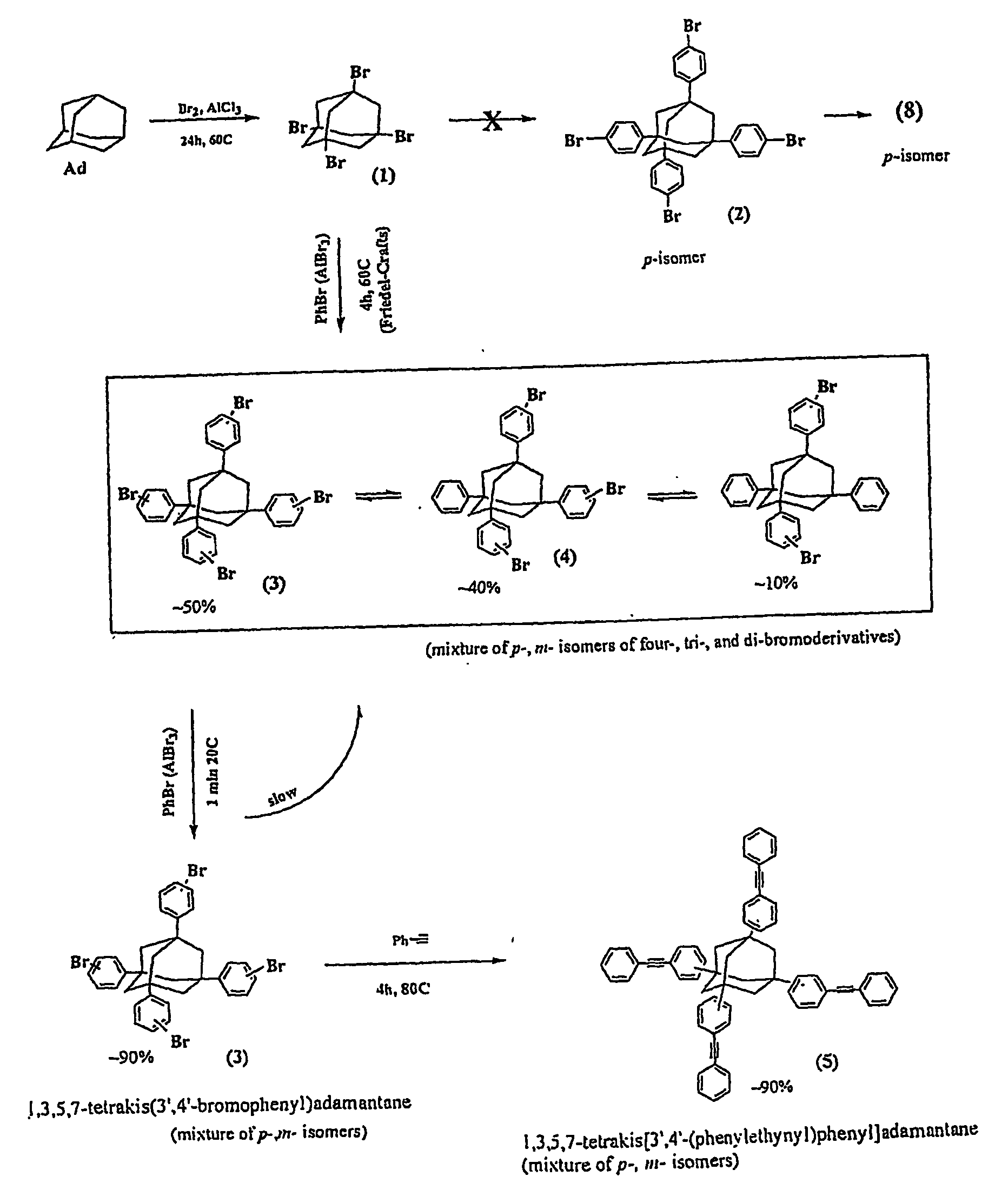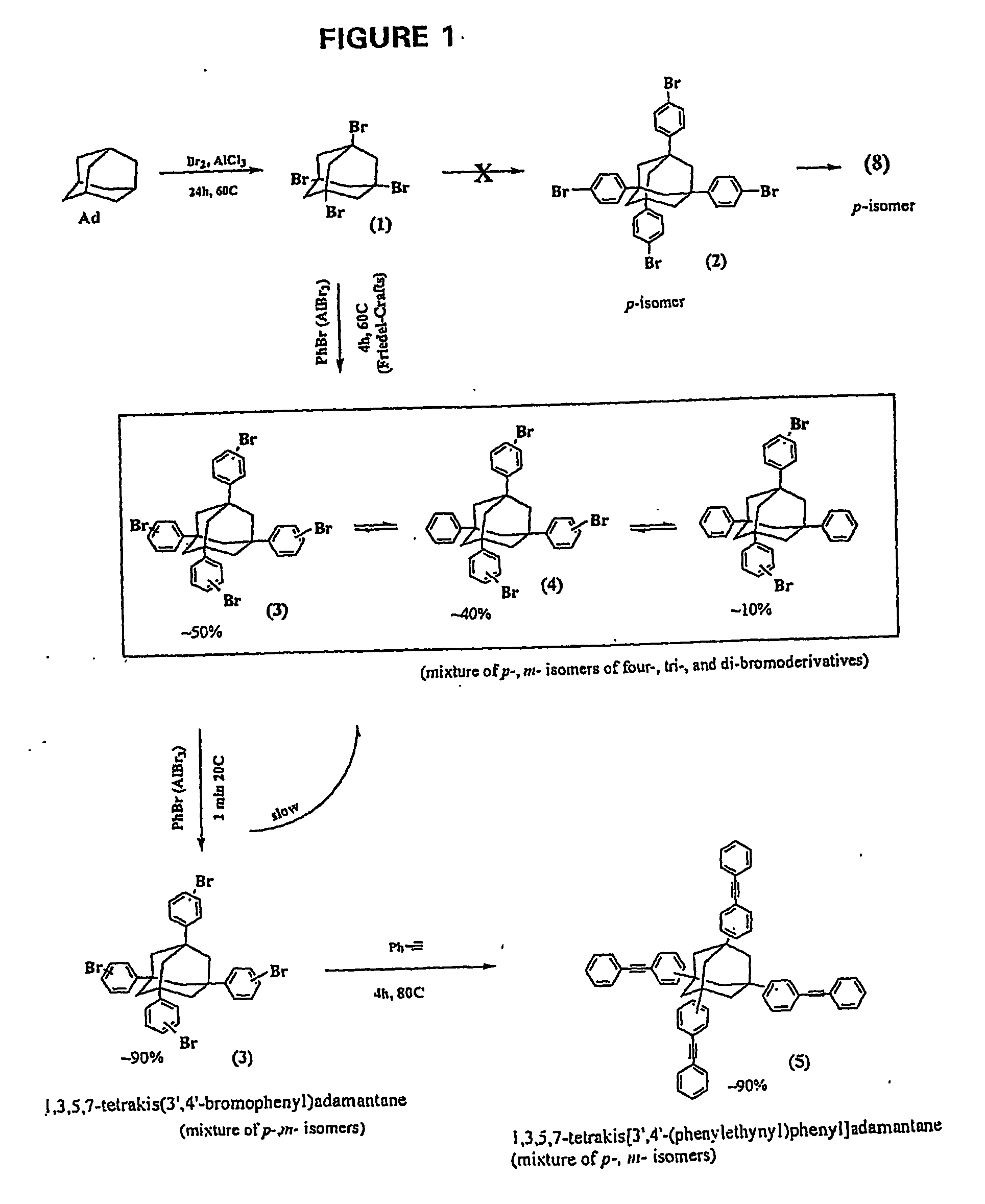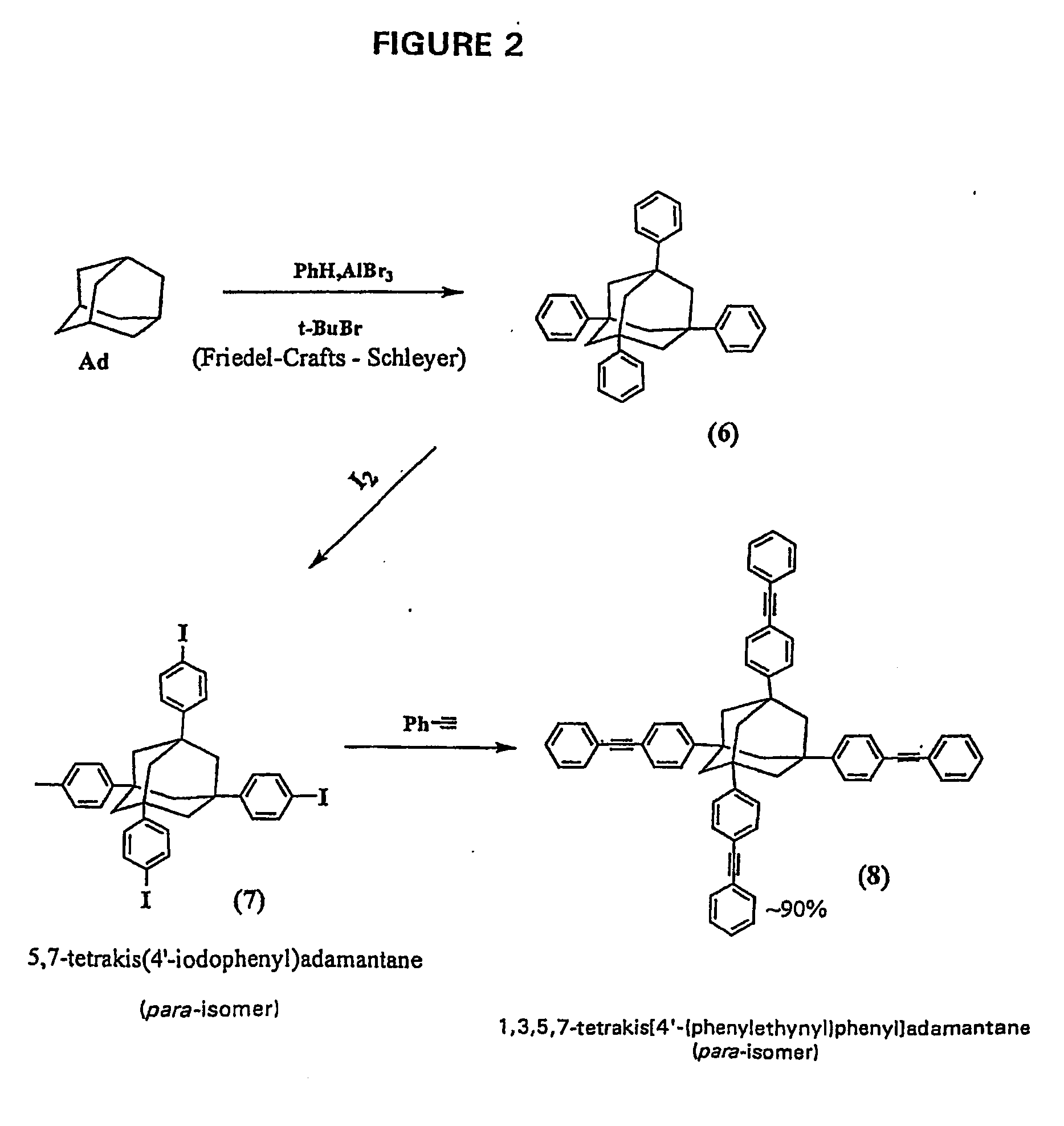Organic compositions
a technology of organic compositions and derivatives, applied in the field of compositions, can solve the problems of increasing current consumption, increasing the capacitance between neighbouring conductive lines, and increasing current consumption
- Summary
- Abstract
- Description
- Claims
- Application Information
AI Technical Summary
Problems solved by technology
Method used
Image
Examples
##ventive example 1
Inventive Example 1
Dynthesis of 1,3,5,7-Tetrabromoadamantane (TBA)
[0151] 1,3,5,7-Tetrabromoadamantane synthesis started from commercially available adamantane and followed the synthetic procedures as described in G. P. Sollott and E. E. Gilbert, J. Org. Chem., 45, 5405-5408 (1980), B. Schartel, V. Sttimpflin, J. Wendling, J. H. Wendorff, W. Heitz, and R. Neuhaus, Colloid Polym. Sci., 274, 911-919 (1996), or A. P. Khardin, I. A. Novakov, and S. S. Radchenko, Zh. Org. Chem., 9, 435 (1972). Quantities of up to 150 g per batch were routinely synthesized.
##ventive example 2
Inventive Example 2
Synthesis of Mixture of 1,3,5,7-Tetrakis(3′ / 4′-bromophenyl)adamantane (TBPA); 1,3,5-tris(3′ / 4′-bromophenyl)-7-phenyladamantane (TBPPA); 1,3-bis(3′ / 4′-bromophenyl)-5,7-diphenyladamantane (BBPDPA): and at least 1,3 / 4-bis[1′,3′,5′-TRIS(3″ / 4″-bromophenyl)adamant-7″-yl]benzene (BTBPAB)
[0152] In a first step, TBA from Inventive Example 1 was reacted with bromobenzene to yield supposedly 1,3,5,7-tetrakis(3 / 4-bromophenyl)adamantane (TBPA) as described in Macromolecules, 27, 7015-7023 (1994) (supra). HPLC-MS analysis showed that of the total reaction product the percentage of the desired TBPA present was approximately 50%, accompanied by 40% of the tribrominated tetraphenyladamantane, and about 10% of the dibrominated tetraphenyladamantane.
[0153] Specifically, the experimental-procedure for Step 2 above follows:
[0154] A dry 5 L 3-neck round bottom flask, water condenser, magnetic stir-bar, heating mantle, thermocouple, thermal controller unit, and N2 inlet-outlet to 30...
##ventive example 3
Inventive Example 3
Synthesis of Mixture of 1,3,5,7-Tetrakis(3′ / 4′-bromophenyl)adamantane (TBPA) and 1,3 / 4-bis[1′,3′,5′-tris(3″ / 4″-bromophenyl)adamant-7′-yl]benzene (BTBPAB)
[0157]
[0158] Unexpectedly, however, when the preceding product mixture from Inventive Example 2 was subjected to fresh reagent and catalyst (bromobenzene and AlCl3, 1 min at 20° C.), the TBPA proportion of the mixture of the tetrabrominated, tribrominated, and dibrominated monomers increased from about 50% to approximately 90-95%. 3-5 weight percent of BTBPAB remained. We were so surprised by this result that we repeated it several times to confirm and this resulted in a novel process for converting the preceding mixture to a thermosetting component (a), as described below and set forth above.
[0159] Specifically, the experimental procedure for Inventive Example 3 above follows. The equipment used was the same as that of Inventive Example 2 above.
[0160] S The corresponding amounts of bromobenzene and aluminum br...
PUM
| Property | Measurement | Unit |
|---|---|---|
| dielectric constants | aaaaa | aaaaa |
| dielectric constant | aaaaa | aaaaa |
| dielectric constant | aaaaa | aaaaa |
Abstract
Description
Claims
Application Information
 Login to View More
Login to View More - R&D
- Intellectual Property
- Life Sciences
- Materials
- Tech Scout
- Unparalleled Data Quality
- Higher Quality Content
- 60% Fewer Hallucinations
Browse by: Latest US Patents, China's latest patents, Technical Efficacy Thesaurus, Application Domain, Technology Topic, Popular Technical Reports.
© 2025 PatSnap. All rights reserved.Legal|Privacy policy|Modern Slavery Act Transparency Statement|Sitemap|About US| Contact US: help@patsnap.com



